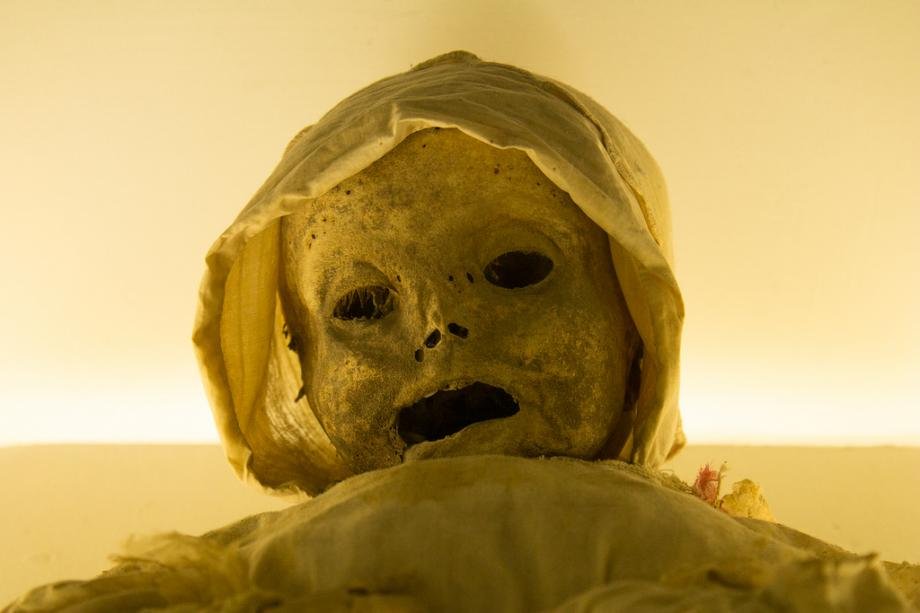If you’re one of those people who prefer museums over hanging gardens and cafes, then here’s one incredible museum that you can include in your bucket list and just so you know, it’s not for the faint-hearted. The Museum of the Mummies is what I am talking about.
Located in Mexico city, Museo de las Momias de Guanajuato (The Museum of the Mummies) is a place where you can chill with the mummies.
How this place came into existence will make you go bonkers. It has a sad yet interesting history attached to it.
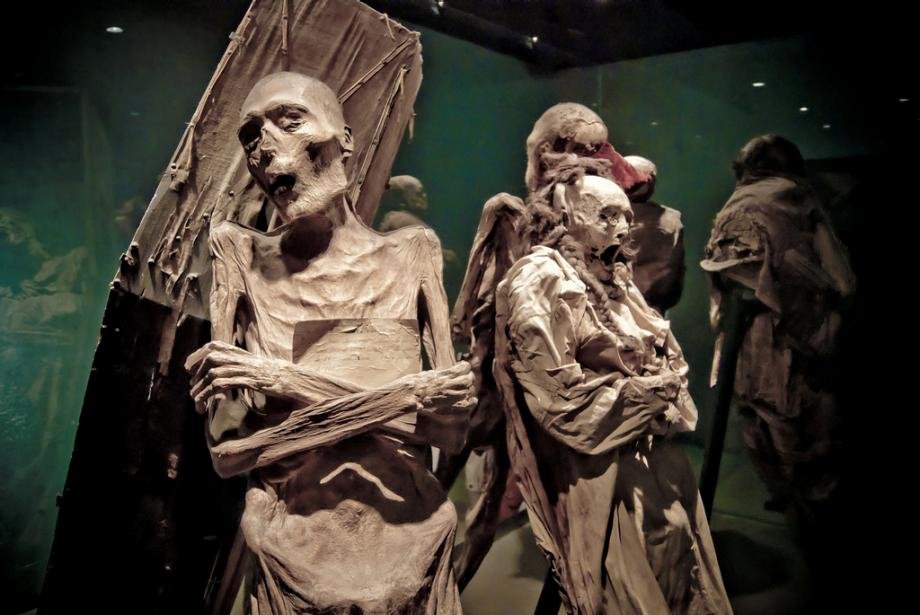
The history of the mummies of Guanajuato dates back to the cholera outbreak of Mexico in 1833.
It was a period when, apart from the dead, a small number of people were apparently buried alive if they caught the disease so as to stop from spreading it further among the masses. Because of this, the city’s cemetery started to fill up so quickly that the government had to enact a ‘grave tax’ in 1865, demanding families to pay a sum of money to keep their deceased relative buried. Failing to pay the tax resulted in digging up the dead bodies from the grave which were then evicted so that the place can be used for another body.
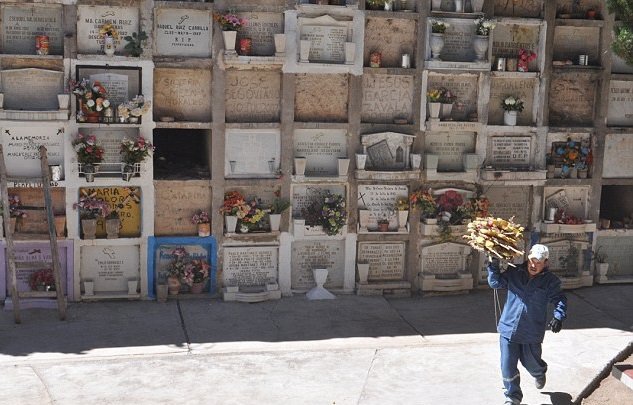
Surprisingly, as corpses were disinterred, it was found that a small percentage of the dead had been naturally mummified.
It all happened because of the dry climate of the semi-arid region of Guanajuato, as a result of which the decomposition had come to a halt and and the corpses had mummified.
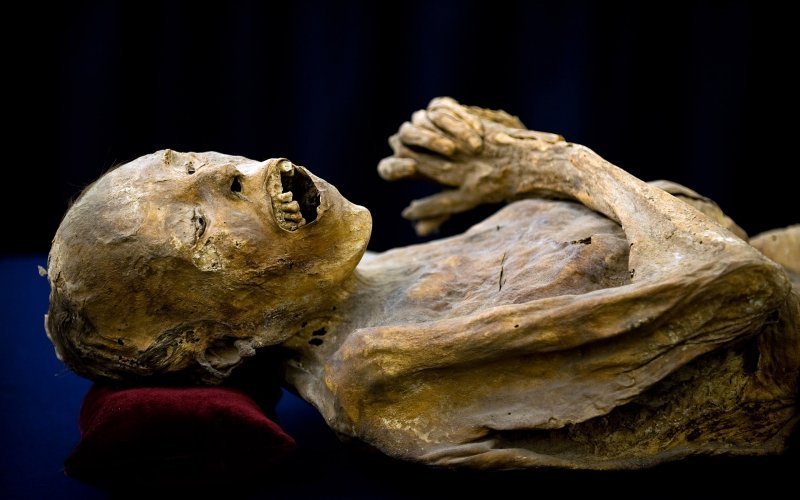
Some of them are preserved with such perfection that their eyebrows, beards and fingernails are still in place.
The corpses are preserved in air tight crypts as lack of oxygen slows down the rate of decomposition.
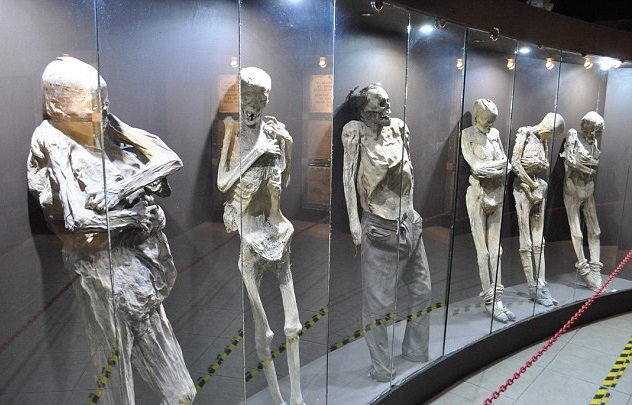
The first one to be disinterred was Remigio Leroy who died during the 19th century on his visit to Guanajuato. This 200-year-old ‘French doctor’ still wears the same clothes he was mummified in.
Seeing the excitement in people for preserved mummies during the 1900s, the cemetery decided to put them on display which resulted in establishing the Guanajuato Mummy Museum in the 1950s. However, the ‘grave tax’ was abolished in 1958 but by then, the museum had already gained much attention that it still houses the original mummies.
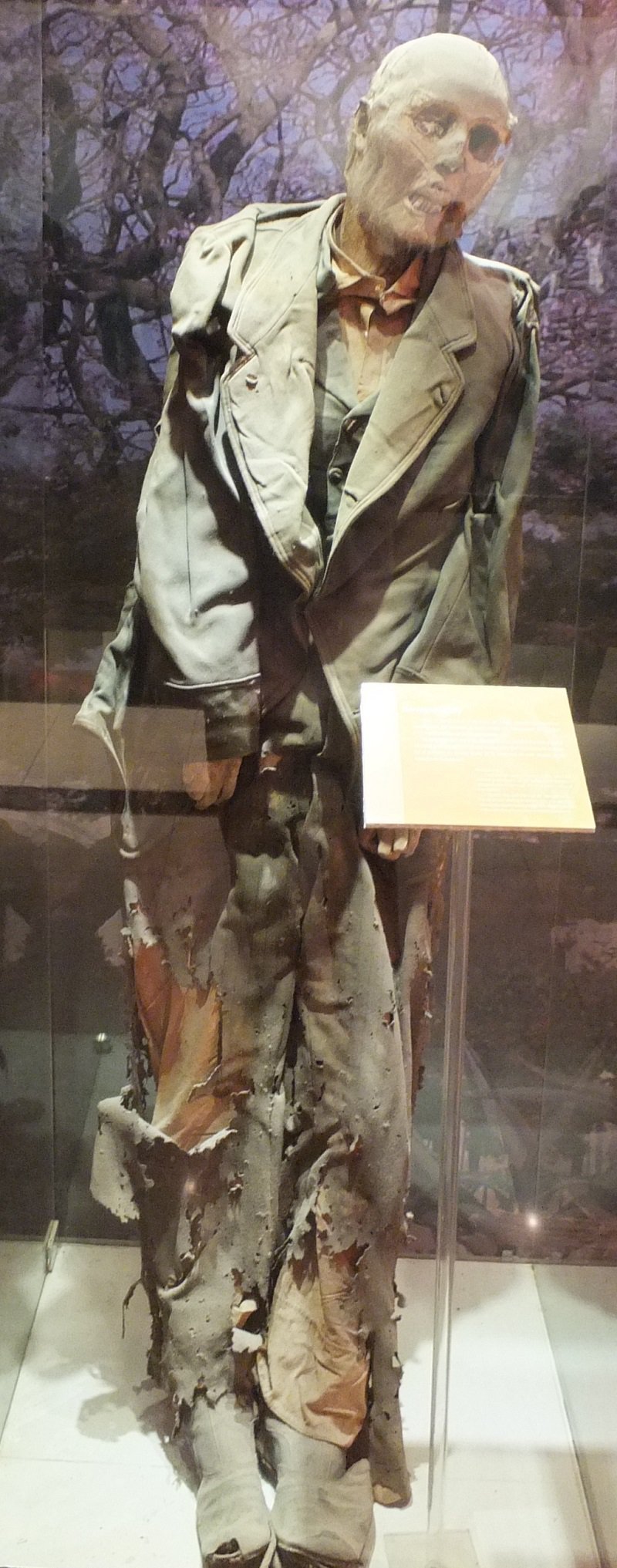
The museum also houses the world’s smallest mummy which is actually a four-month-old mummified fetus whose mother died during the cholera epidemic.
It was found in the mother’s womb, preserved just like every other mummy in the museum and can now be observed using a magnifying glass placed above it.
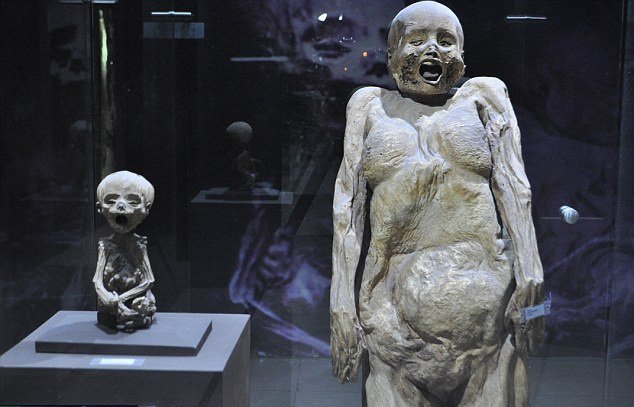
Another one that stands out is the mummy of Ignacia Aguilar who was apparently buried alive.
Ignacia Aguilar had a rare heart condition which made her heart stop at times and she would pass out for more than a day. However, once she did not recover in a timely manner and was buried alive considering the fact that she is dead. Years later, when the cemetery disinterred her body from the grave, it was found that she was facing down biting her hand and her mouth was filled with dried blood and there were scratches on her forehead.
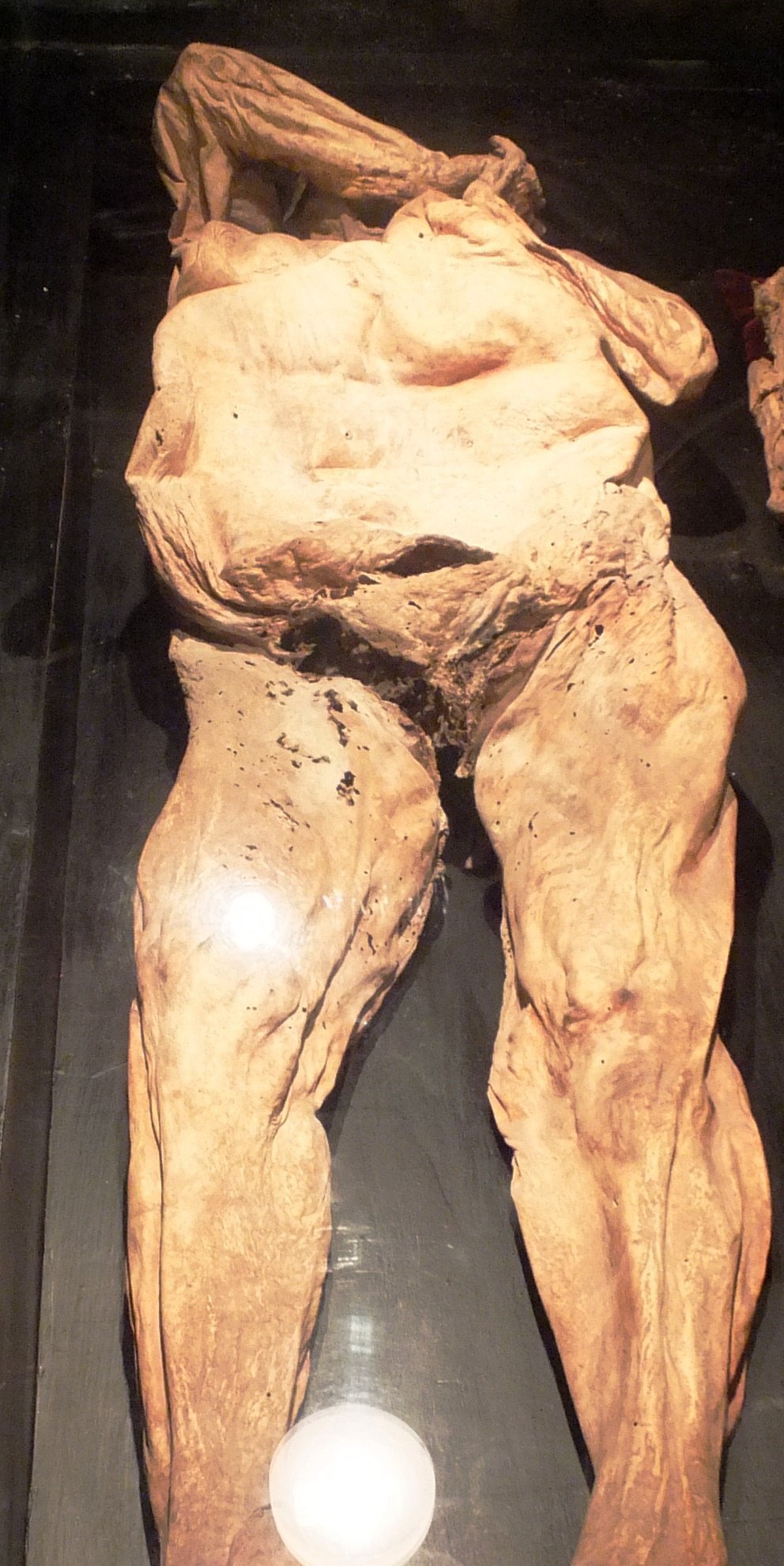
Then there is ‘Little Saint Martin’, an infant who died at birth.
He was not formally named so his parents dressed him as Saint Martin hoping a peaceful afterlife for him.
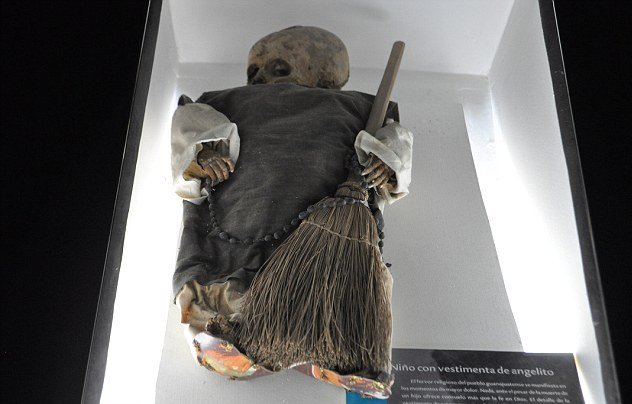
With open mouths, agonised faces and distorted bodies, people believe that most of these were buried alive during the cholera outbreak.
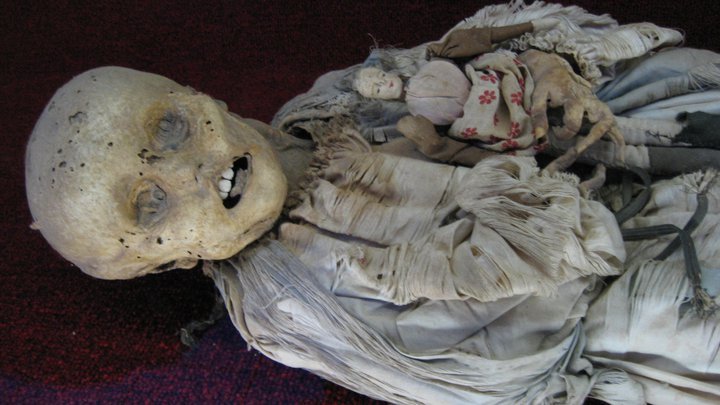
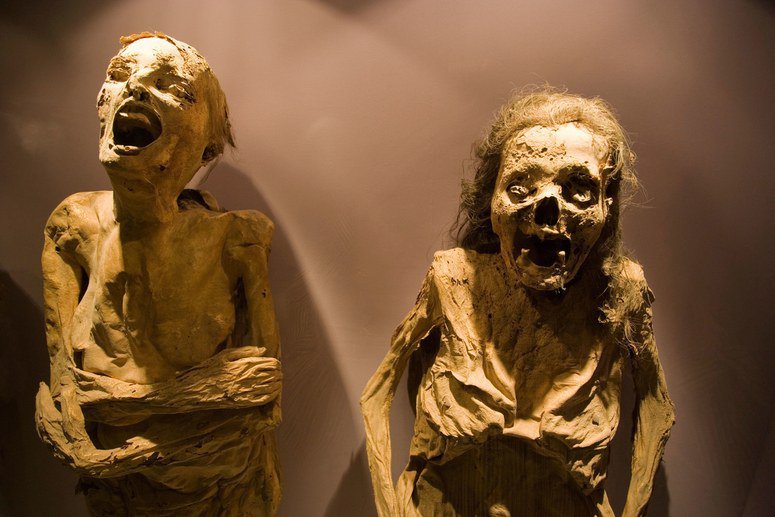
You can see the eyes of some have calcified while the uterus and ovaries of some have left an impression on their stomach and also that some of them are wearing shoes and socks.
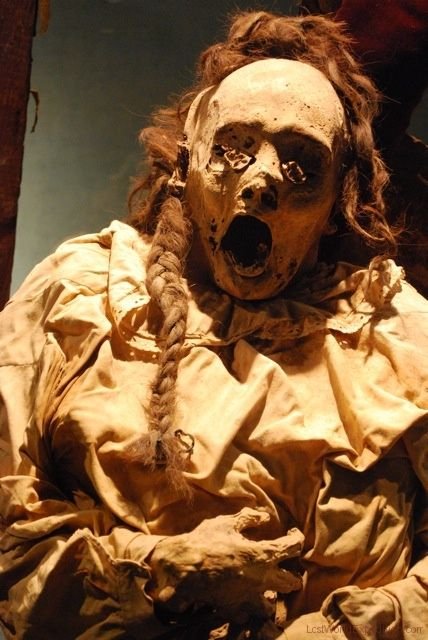
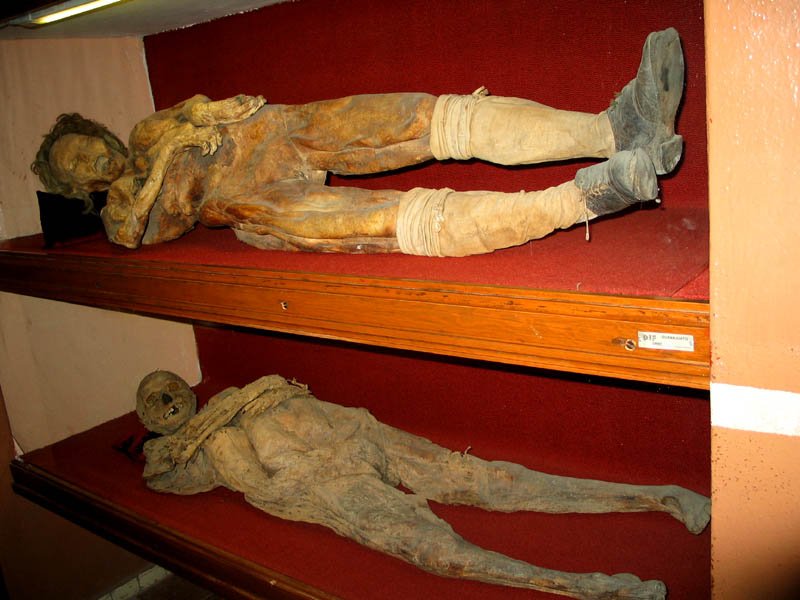
At present, the Guanajuato Mummy Museum has around 108 mummified corpses on display, making it one of the biggest tourist attractions across the world.
